April 19, 2025
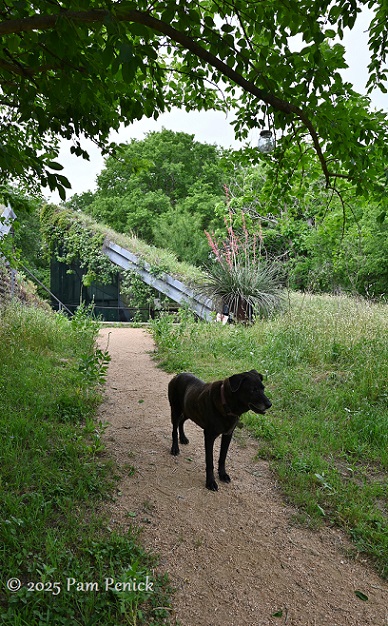
Located in a (formerly) derelict industrial zone in east Austin, Edgeland House is one of the most written-about residences in town, despite being all but invisible from the street. Owner Christopher Brown, a lawyer and author of dystopian science fiction, built his unique house on a brownfield with an abandoned oil pipeline running through it. Once the pipeline was removed and the site cleaned up, he hired Bercy Chen Studio LP to build a house wedded to the land.
Taking inspiration from Native American pit houses, the house tucks into a bluff above the Colorado River. A meadowy pyramid — a green roof of prairie plants that insulates the sunken home — disguises evidence of human habitation until you’re nearly on top of it. An exhaust pipe poking through the grasses hints at the living space below, reminiscent of the Lost Boys’ lair or Bilbo Baggins’s hobbit hole.
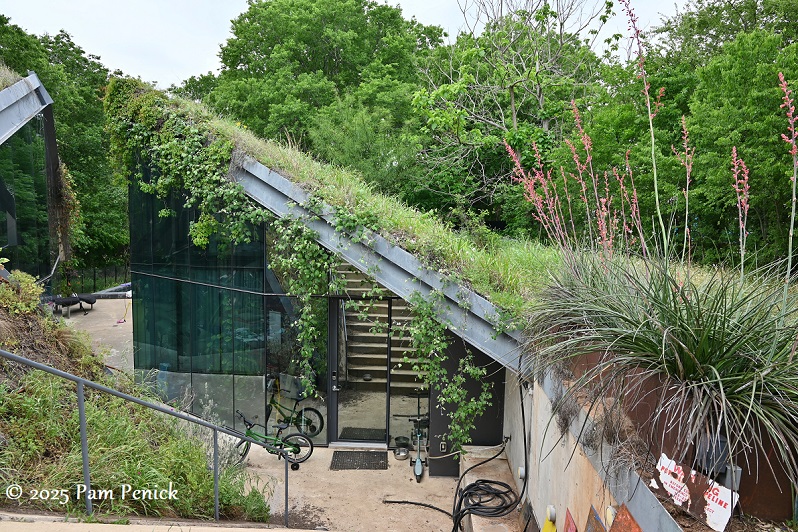
And then you find, essentially, the roof edge of Edgeland House and look down with astonishment at the hidden house below. A wide concrete stair leads down to the entrance — entrances, really. The house is divided in two by a canyon-like breezeway. An open-concept living room and kitchen make up the public half of the 1,400-square-foot home. Two bedrooms and a bath are found in the private half.
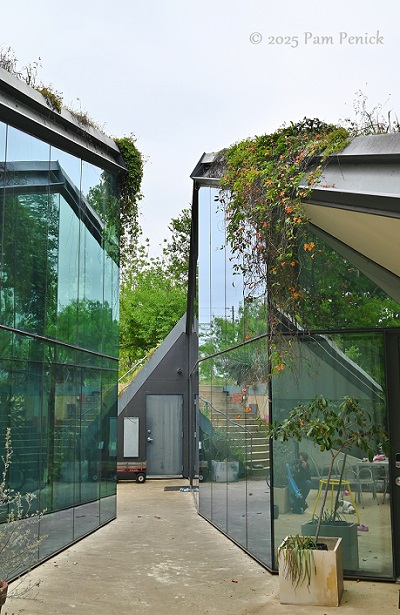
Soaring walls of glass in the center admit flooding light, soaked up by a collection of supersized houseplants in the kitchen. Crossvine on the green roof drapes over the windows, offering a front-row view of hummingbird antics. The divided home doesn’t just invite but requires daily engagement with the outdoors, as its residents move between the public and private spaces.
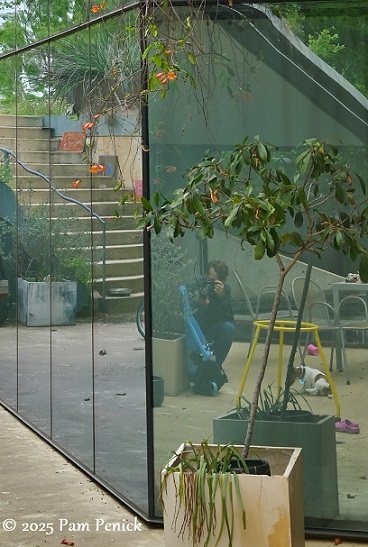
I visited Edgeland House last week. Chris gave me a tour of the award-winning house, where he lives with his wife and daughter, and we took a walk through the floodplain public lands below, where he loves to explore along the Colorado River. I first met Chris at the Texas Book Festival last fall, at a presentation for his latest book, A Natural History of Empty Lots: Field Notes from Urban Edgelands, Back Alleys, and Other Wild Places.(Read my review of his elegiac eco-memoir.)
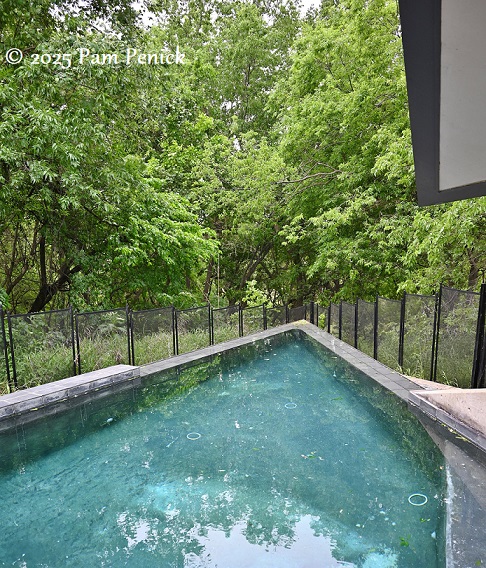
Echoing the home’s triangular rooflines, a small swimming pool juts toward the bluff edge, offering an escape from the summer heat. The safety fence, erected when their school-age daughter was a toddler, will come down soon, Chris said.
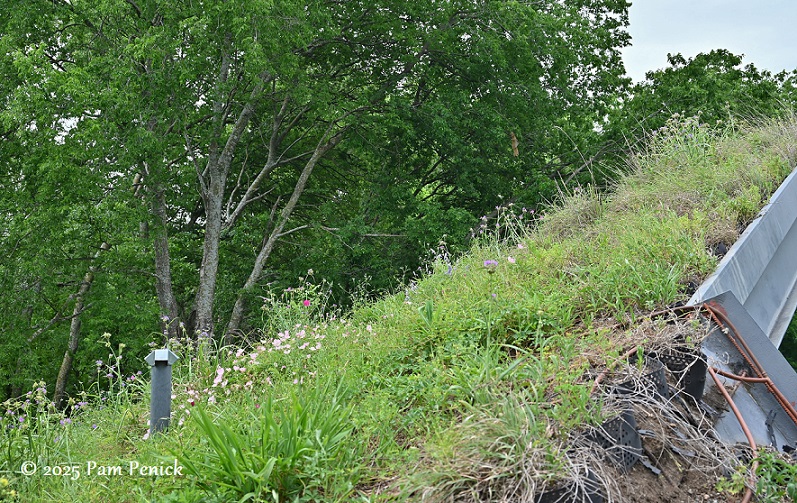
As Chris writes in his book, his family shares the property with all manner of wild creatures drawn to the prairie-roofed home and the quiet pockets of this post-industrial landscape. Deer, coyotes, turtles, monk parakeets, hawks, herons, coral snakes, armadillos, and more make their homes alongside Chris and his family in this semi-feral edgeland.
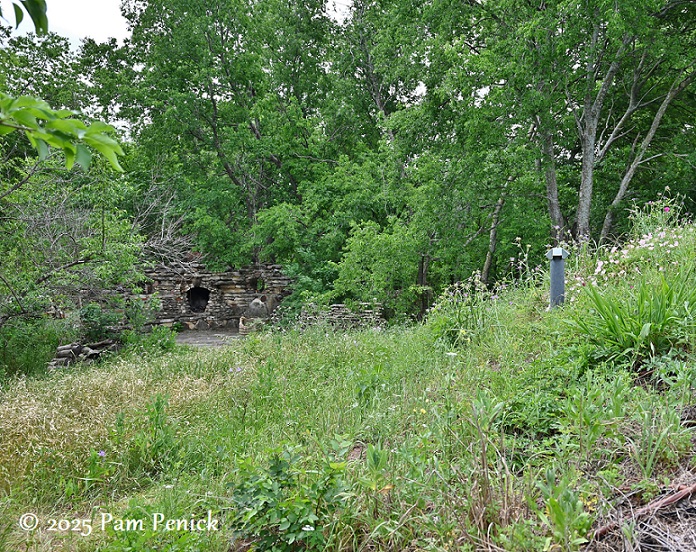
Just beyond the house, a curved wall of stacked and cobbled stone beckons — a fireplace grotto Chris constructed from local stone and found objects.
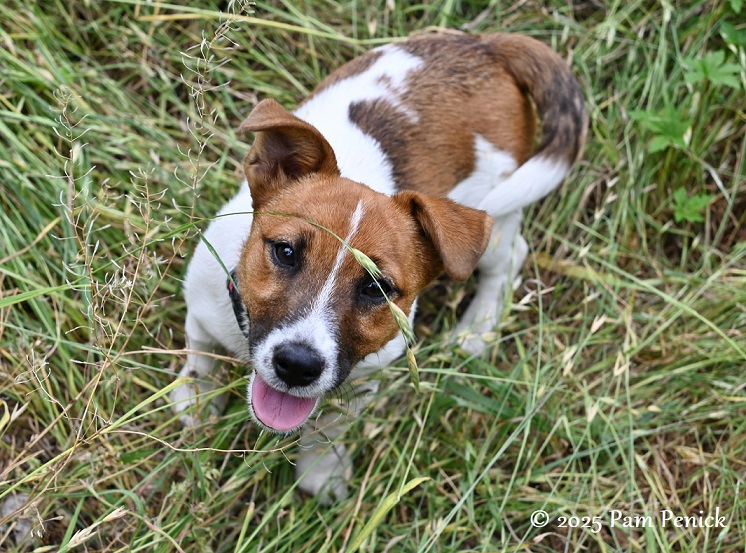
Accompanied by Fifi, a Jack Russell puppy with tornado-like energy, and Lupe, the family’s older (and remarkably puppy-patient) rescue, Chris and I set out on his usual walking route. Chris is a keen-eyed observer, and I was interested to see what we’d discover along the way.
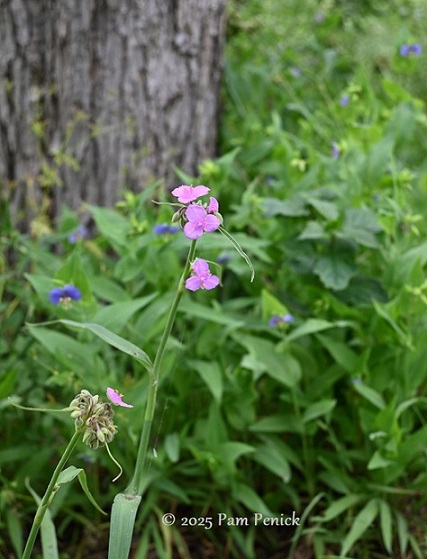
Native spiderwort and widow’s tears were flowering in the shade.
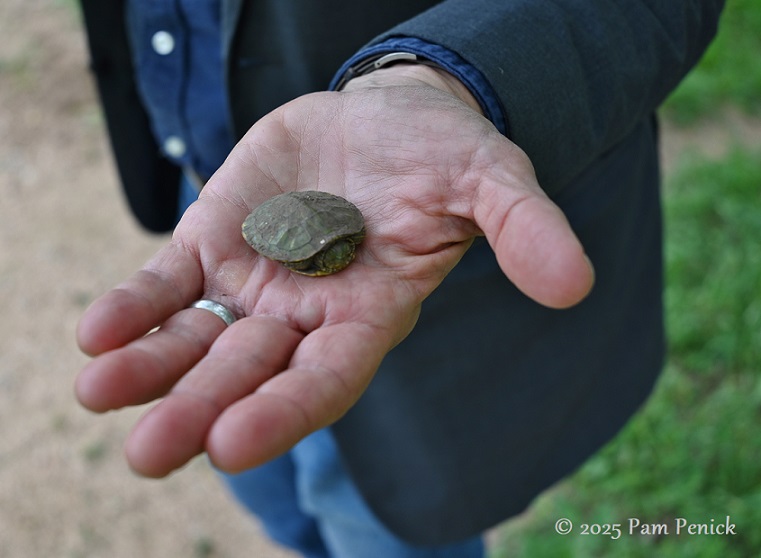
Chris rescued a tiny turtle on the path from becoming a plaything of Fifi’s.

The fireplace grotto with built-in benches gave Old Austin vibes, reminding me of Sparky Park and cobbled walls I’ve admired in the gardens of Jill Nokes and Tait Moring. It’s built of limestone and found objects that turned up on the property or washed up along the river.
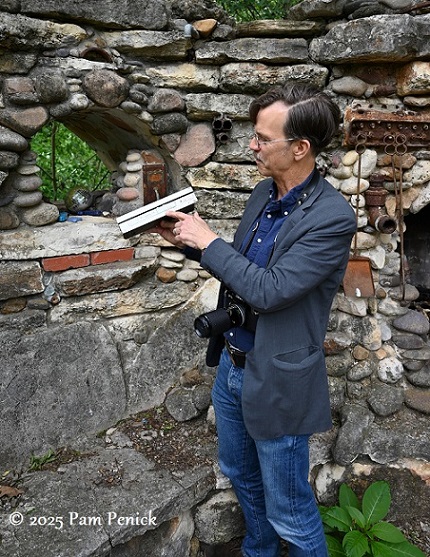
Chris inspected a 1950s electronic something-or-other — a relic from another era, when east Austin’s industrial businesses catered to Bergstrom Air Force base, today the site of Austin’s commercial airport.
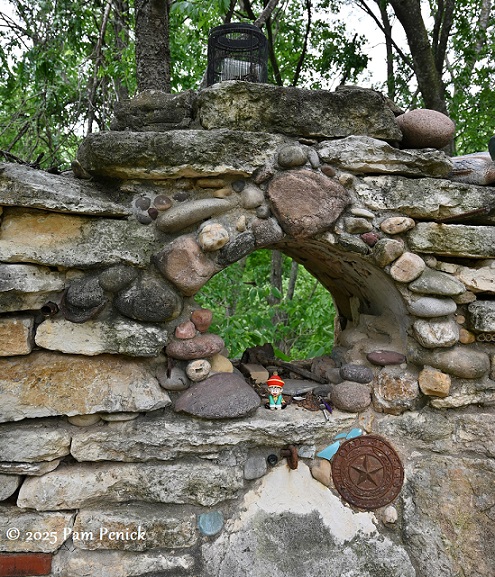
Wall detail
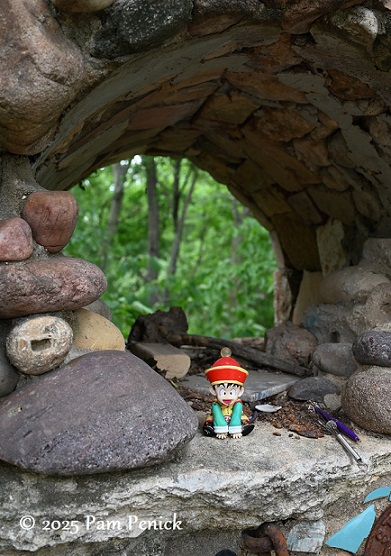
A niche holds more found objects.
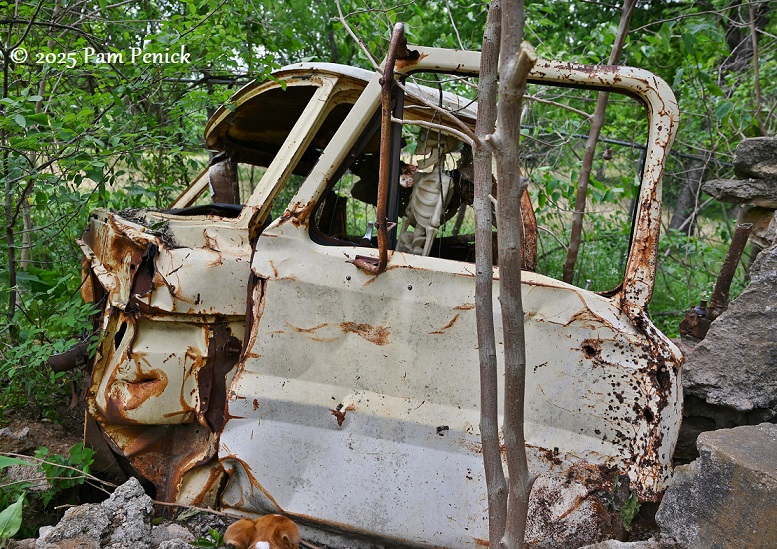
I was surprised to see a husk of a car beside the patio, a gleeful skeleton at the wheel. “Did you find that here too?” I asked. “Yep,” he said.
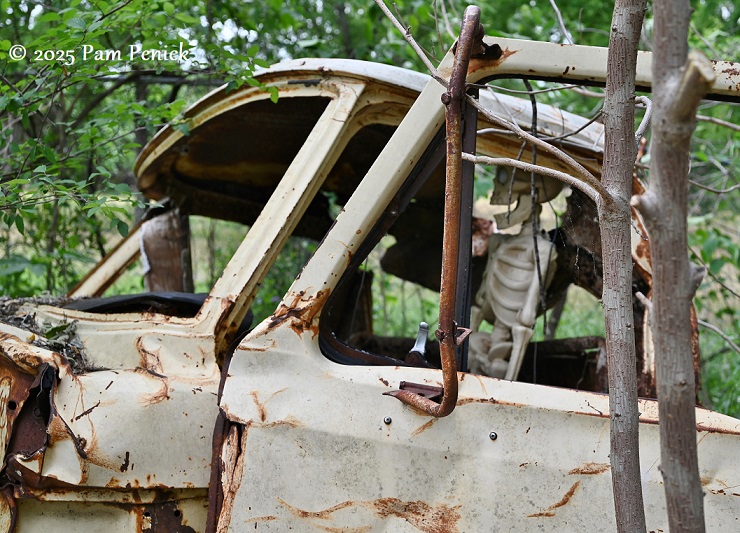
It’s all fair game for dark-humor decoration.
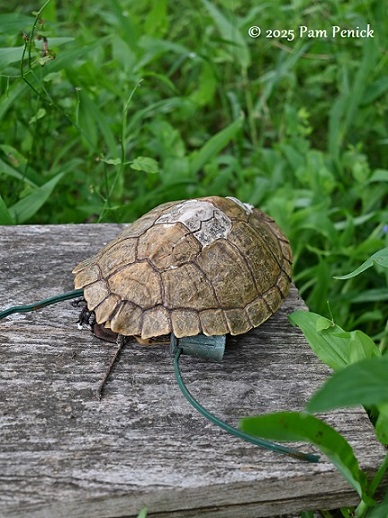
A turtle shell on a bench looks wired for something. I wish I’d asked.
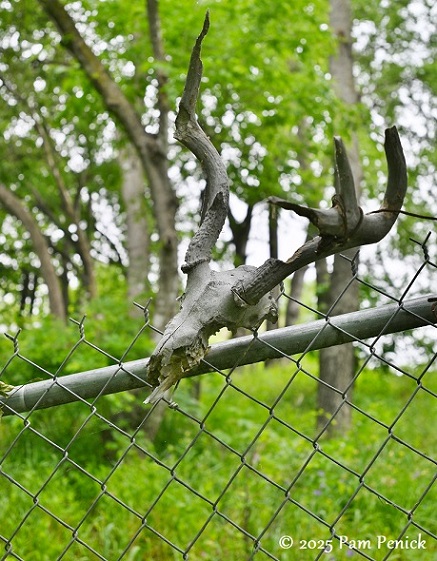
A deer skull on a chain-link fence prompted Chris to say this is the stag he found garroted by wire in the woods, which he wrote about in his book and in Field Notes, his Substack (well worth subscribing to, by the way).
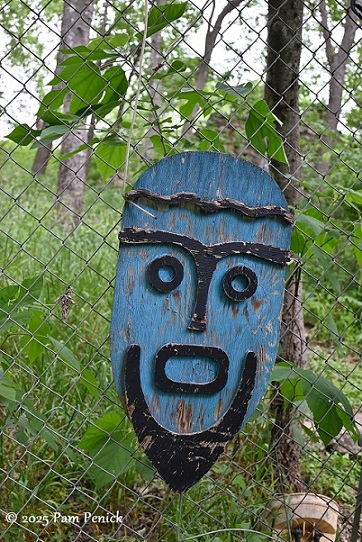
A plywood mask on the fence made me ask, “Found or made?” I should have known by this point. “Found,” Chris said.
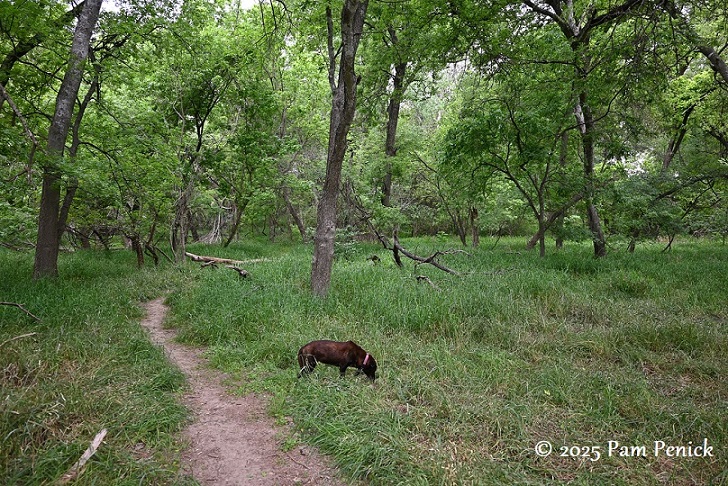
At the bottom of the bluff, trees towered over a dirt trail lined with deadfall. Lupe meandered through tall grass with her nose to the ground, deciphering scent trails.
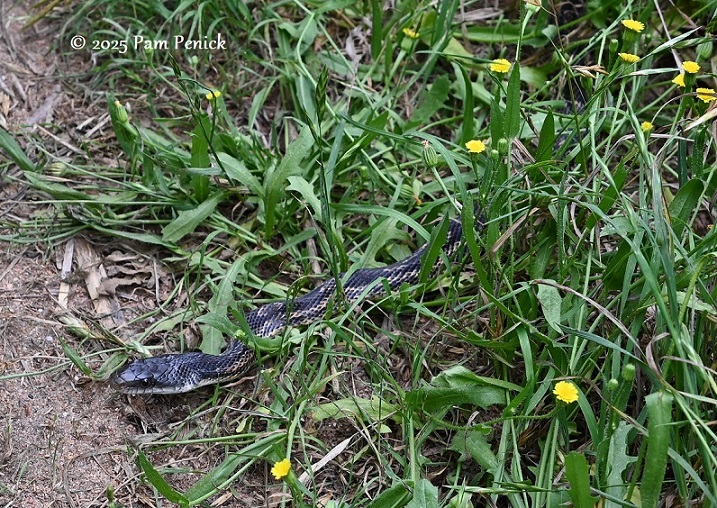
As I followed Chris along the trail, I saw a rat snake in the grass. It had narrowly missed getting stepped on. It held so still as I leaned in for a photo that I wondered for a moment if it was dead. In a flash, it turned and shot away.
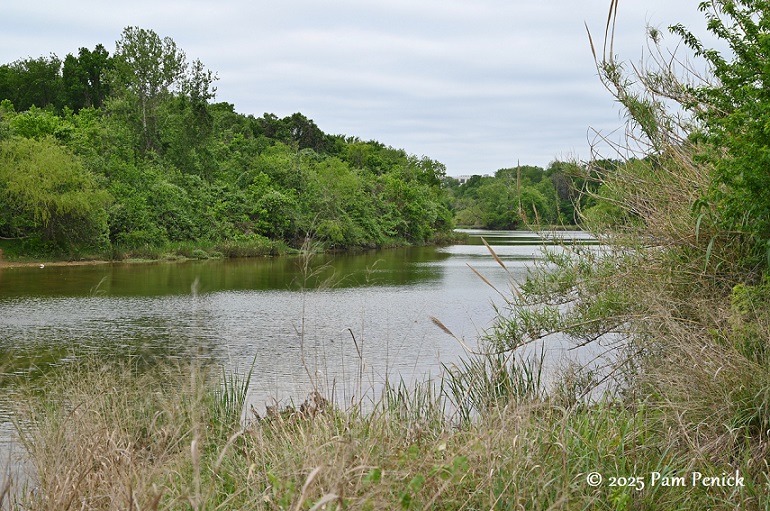
A little farther on, the trees backed away and the grasses gave way to the wide, green Colorado River — and not a building in sight. It was a view so surprising that a Wow! popped out. “I know!” said Chris enthusiastically.
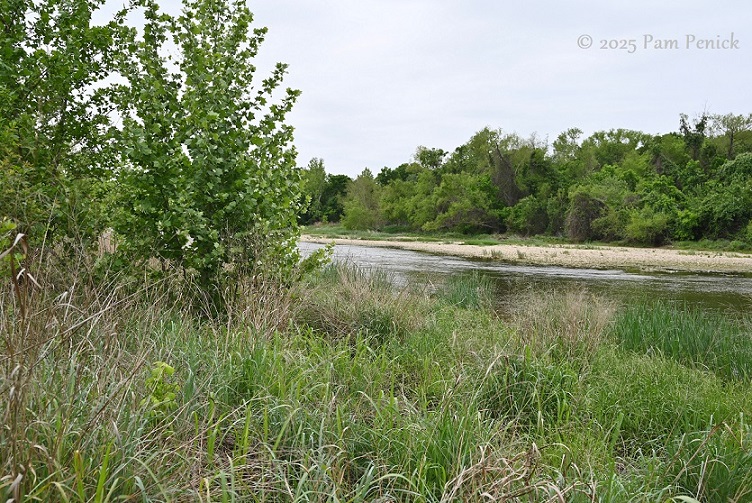
If you didn’t know the city sprawled along the bluff behind you, hidden behind trees, you’d think you were on a rural stretch of the Pedernales.
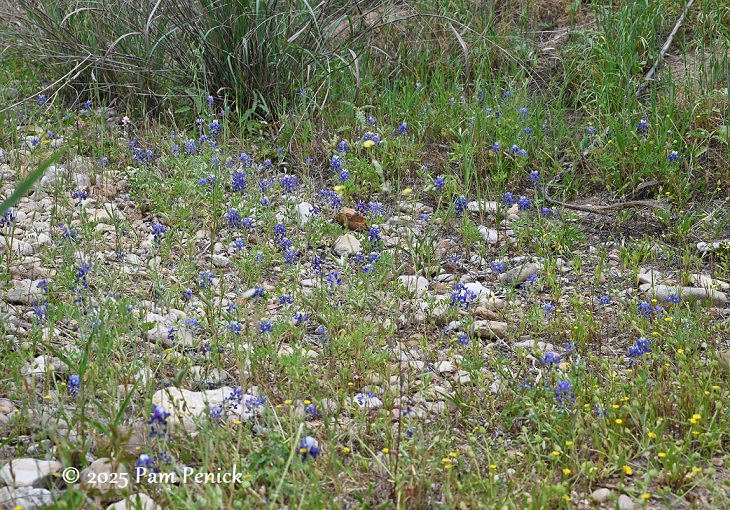
Bluebonnets straggled among river rock.
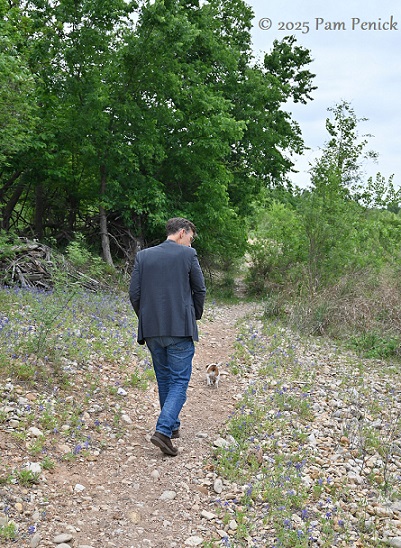
Chris and Fifi walked ahead…
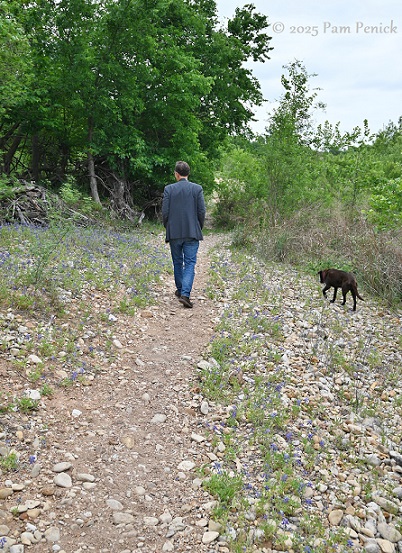
…with Lupe trailing along.
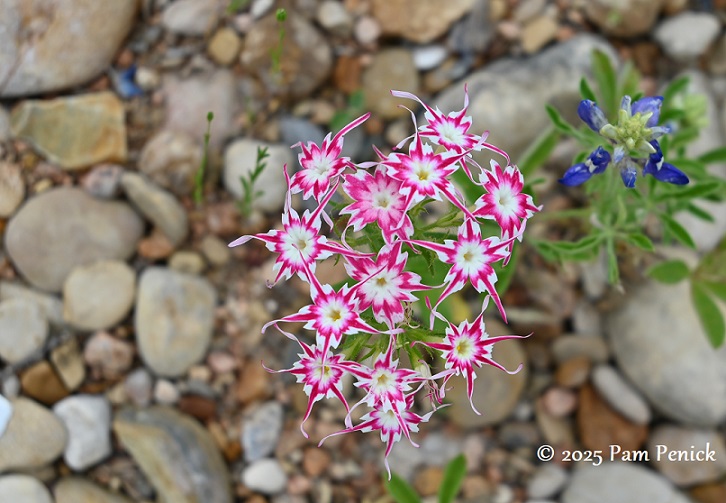
Phlox like fireworks exploding…
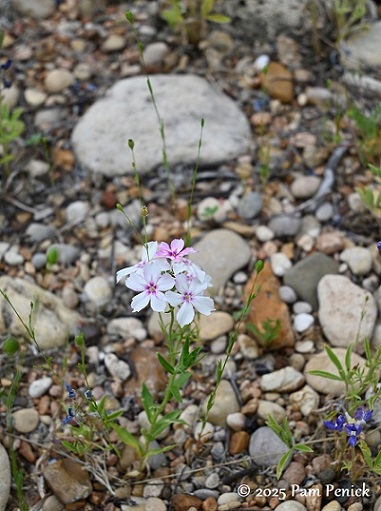
…and in tightly held bouquets mingled with the bluebonnets.
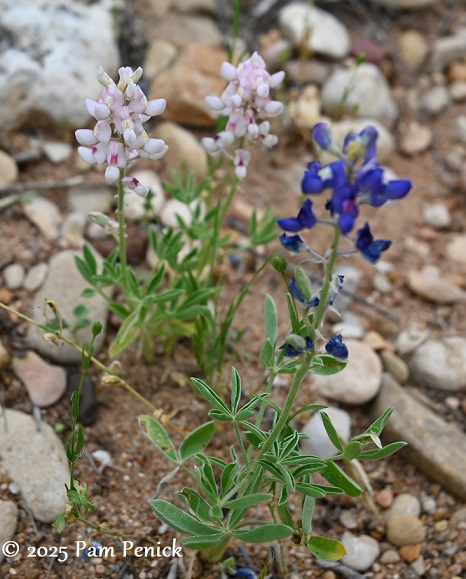
There were a few unusual pink bluebonnets hiding among the standard blues.
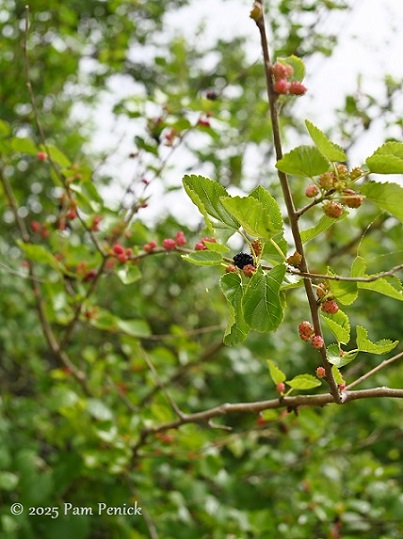
Wild mulberries too
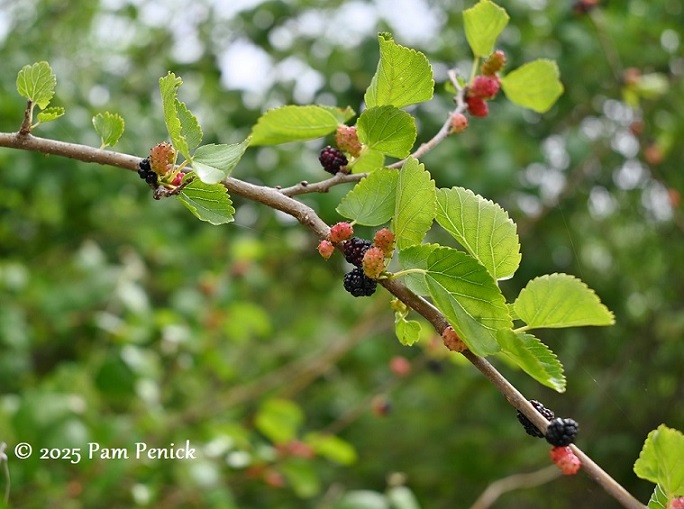
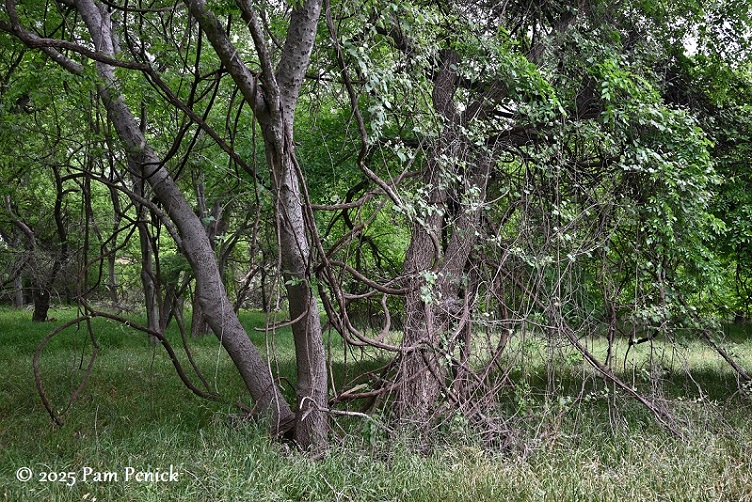
Heading back, Chris pointed out this gothic scene of grapevine-swagged trees as his favorite view — a wild tussle for light, maybe even a life-or-death struggle playing out in slow motion. Just the kind of view I would expect a committed nature lover living on the edgeland to appreciate most.
My thanks to Chris for the home tour and the river walk! And readers, if you don’t know about Chris’s book, A Natural History of Empty Lots, check it out. He and I share the same publisher and editors at Timber, and I know how proud they are of his book too.
I welcome your comments. Please scroll to the end of this post to leave one. If you’re reading in an email, click here to visit Digging and find the comment box at the end of each post. And hey, did someone forward this email to you, and you want to subscribe? Click here to get Digging delivered directly to your inbox!
__________________________
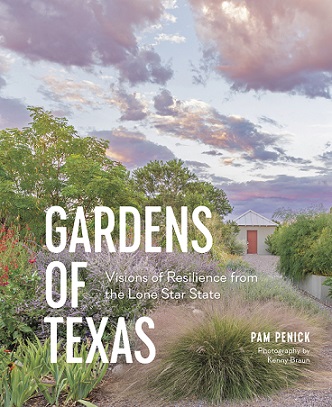
Digging Deeper
My new book, Gardens of Texas: Visions of Resilience from the Lone Star State, is available for pre-order at Amazon and other online book sellers. It’ll be released on October 14th, and while that’s several months away, pre-orders are tremendously helpful in getting my book noticed by readers and reviewers. Please consider pre-ordering if you’d like to read it this fall; more info here. Thank you for your support!
Shop the Spring Native Plant Sale at the Lady Bird Johnson Wildflower Center each weekend through April 27, 9 am to 1 pm (last entry at 12:30 pm). Plant sale admission is free. Bring your own wagon or cart to transport your treasures.
Tour 5 unique Houston gardens on Saturday, April 26, from 10 am to 4 pm, during the Garden Conservancy’s Open Day Tour for Houston. Tickets must be purchased online in advance through the Garden Conservancy.
Come learn about gardening and design at Garden Spark! I organize in-person talks by inspiring designers, landscape architects, authors, and gardeners a few times a year in Austin. These are limited-attendance events that sell out quickly, so join the Garden Spark email list to be notified in advance; simply click this link and ask to be added. Read all about the Season 8 lineup here!
All material © 2025 by Pam Penick for Digging. Unauthorized reproduction prohibited.

